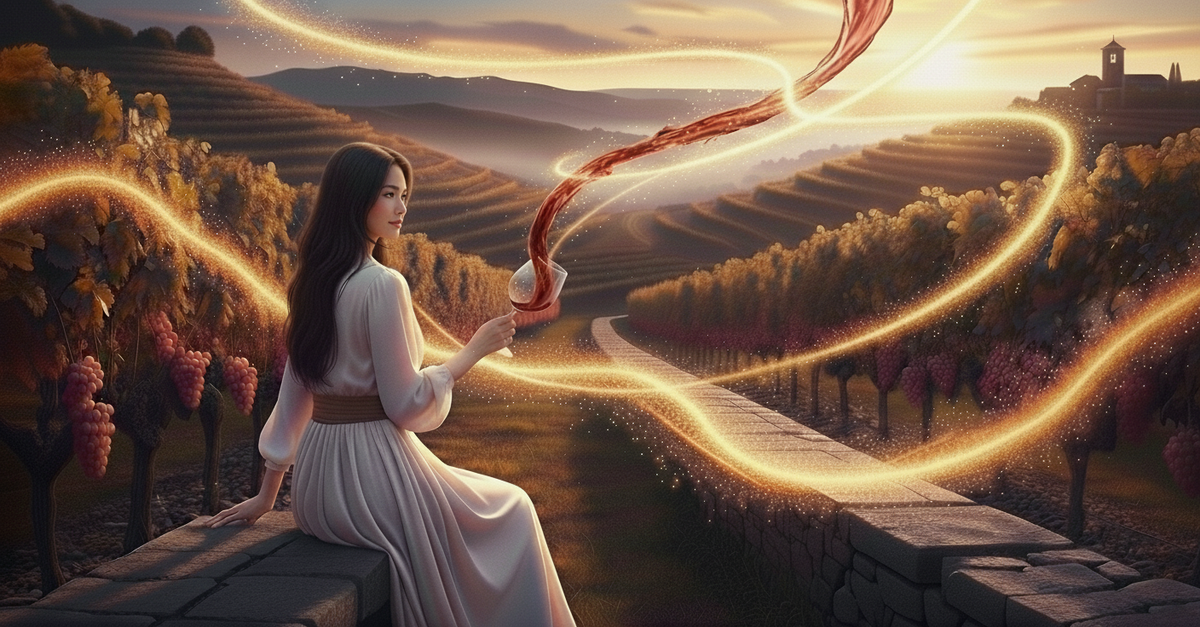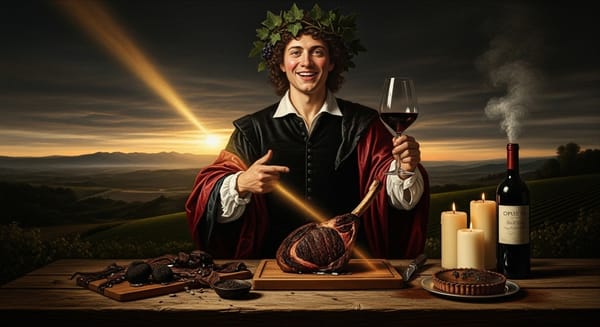Forged in Slate: The Tenacious Beauty of Priorat Wine
Priorat is no gentle hillside. It is a crucible of slate and sun where Garnacha and Cariñena cling to broken terraces, producing wines of tannic gravity and wild, savory fire. Explore its history, landscape, and investment allure in a meditation that marries melancholy and exuberance.

Threshold of Stone
The road curls upward from the Ebro like a question no map can answer, trading asphalt for dust and finally for silence. Heat presses against the car windows until thought itself begins to melt, slow and bright. When the engine cuts, you hear it: the hush of stone warming in the sun, the faint crack of slate splitting under its own tension. This is Priorat, and it does not greet you; it regards you, patient as a cliff face. You wanted beauty, maybe even elegance. Priorat never promised you that.
Here vines crawl across llicorella—the black, mica‑flecked slate—like script scratched into an ancient tablet. They do not flourish; they survive, roots diving meters deep in search of a sip of winter rain. Each twisted trunk is an old scar, each berry a slow‑beating heart. Taste comes later. First you must feel the gravity.
Resurrections Carved in Silence
Resurrection stories always leave fingerprints on the tellers. The Carthusian monks who first terraced these walls in the 12th century spoke little, but they understood the covenant between toil and transcendence. They carved narrow, gravity‑defying ribbons into mountainsides, laid vine alongside prayer, and waited for the slow lift of grace. For five hundred years Scala Dei’s bells marked the cadence of harvest.
Then came Napoleonic wars, secular decrees, phylloxera—a litany of undoings. By the early 1900s whole villages emptied; stone houses gaped like broken teeth. During the long silence of the Franco era only a handful of farmers stayed, binding vines to dead almond trunks and coaxing one more autumn out of ruin. In the 1970s even they considered surrender: easier to find factory work in Barcelona than to duel a slope.
Yet land remembers its own ferocity. In 1979 a young oenologist drove an ox‑blood Renault into Gratallops, stepped onto a shattered terrace, and felt time crack open. Others followed—chemists, poets, exiles—drawn by rumors of black slate that could heat a midnight sky. They slept on cellar floors, traded amphorae for second‑hand barriques, and mortgaged futures on plots where the soil was so thin even weeds starved. Their first vintages sold for less than the barrels that raised them, yet word spread: Priorat was whispering again. By 2000 the region had achieved DOCa status—Spain’s highest legal rank—but titles could never quite fit the old wounded hills. The true honor was simpler: vines were once more speaking in a voice only stone could teach.
Anatomy of Slate and Sky
Stand at sunrise on the peak of La Figuera and watch mist pour through the Siurana valley. Each ridge catches light differently: saffron on one slope, pewter on the next, as though the dawn were deciding how brave to be. The rock beneath your boots is llicorella—flakes of slate and quartz that splinter under pressure yet refuse dust. Break one and the edges gleam like a mirror held to the sun.
Temperatures can swing forty degrees between the first crow of a rooster and the hush of midnight. The north wind, graced with a monk’s name—serè—scrapes moisture from leaves, sharpening acidity even as days climb past forty Celsius. Montsant’s limestone arc to the north funnels storms that gutters cannot tame; you can measure October rainfall not in millimeters but in broken retaining walls.
Altitude swells from 100 meters near the Ebro to nearly 800 on the edges of Porrera. Each 50‑meter rise tweaks ripeness by a day, sometimes two, so harvest becomes a moving chessboard: one plot picked at dawn, the neighboring terrace a week later under the first hint of mistral. Some parcels face east, gathering dawn’s gentleness; others stare west and drink the last brutal heat of sunset. Terroir here is no single note—it is a discordant choir that somehow resolves into song.
Labor on the Edge of Gravity
Terrace maintenance is a second harvest. After pruning, growers hammer dislodged slate back into retaining walls, shovel soil that winter rains have sluiced downhill, and plant wildflowers to rivet earth to earth. Many refuse herbicides, not for fashion but for survival: chemicals run off too fast to matter, and bare ground erodes quicker than a promise.
Old vine Garnacha crowds the headlines, but Cariñena quietly owns the steeper ground. Its trunks twist like arthritic fists yet yield berries that taste of iron filings and dusk. Some growers graft Grenache Gris onto centenarian roots, chasing chiaroscuro: a pale wine that smells of grapefruit pith but finishes with Priorat’s trademark mineral thrum.
Summer labor begins while the moon still owns the sky. Headlamps bob along terraces as crews thin shoots, each cut debating the trade‑off between shade and sugar. Toward veraison they weave green nets beneath the rows—one slip on loose slate can send a year’s wages tumbling into a ravine. Harvest itself is a kind of slow‑motion liturgy: pickers crouch, clip, rise, breathe, repeat, until the sun climbs too high for breath. Every cluster travels by mule or by hand‑winch; mechanization would be comic if it weren’t fatal.
Dialogues of Fire and Shadow
Garnacha here does not purr; it crackles. Fruit veers from pomegranate to macerated cherry, always laced with a stony bitterness that refuses sentimentality. Cariñena counters with tension—acidity that pricks the gums, tannins that feel like chalk scraped across cedar. Together they stage a dialogue of fire and shadow.
Whites are rarer but arresting: Garnacha Blanca picks up fennel and smoke, Macabeo lends lemon oil and chamomile, and Pedro Ximénez—imported long ago by Andalusian traders—offers a saline hush that threads between them. Tasted blind, a well‑aged Priorat Blanco can confuse Burgundy devotees; tasted informed, it rewrites the script on Mediterranean white wine structure.
Syrah arrived like a traveling bard—eager, articulate, slightly foreign. In the cooler sites of Torroja it sings of black olive and lavender; lower down it swells toward blueberry jam. Cabernet Sauvignon, once hailed as the future, now divides opinion: some parcels deliver graphite‑edged majesty, others feel like an accent that never mastered local cadence. The best blends let Cabernet whisper but never lead.
On the palate Priorat moves like basalt—slow, dense, shimmering with trapped heat. Alcohol often nudges 15% yet seldom burns; a veil of acidity keeps the gait upright. Tannins begin granular, almost volcanic, and over years knit into a suede grip that anchors aromas long after the swallow. Forget cherries and chocolate—the aftertaste is stone soaked in sun.
Craft Under the Listening Mountain
The modern cellar is part monastery, part laboratory. Indigenous yeast ferments now claim as much respect as imported barrels once did. Cold soaks have shortened; macerations sometimes stretch, sometimes shrink, depending on the unrepeatable chemistry of each plot. A vigneron in Bellmunt swears by concrete eggs, arguing they mimic the breathing rhythm of limestone caverns. Two valleys away a collective of cousins ferments in 1,000‑liter clay tinajas buried to the rim, chasing a texture they call “shadow on the tongue.”
Sulfur regimes are whispered like confessions: enough to steady, never enough to muzzle. Some ferment whole cluster, stems and all, embracing a feral crunch that carves brightness into the wine’s architecture. Others destem religiously, believing purity resides in berry and juice alone. Oak, once universal, now courts nuance: 500‑liter puncheons for slower oxygen exchange; ancient foudre resurrected from Port vintners in Vila Nova; even chestnut barrels for a single experimental cuvée that tastes like walnut bread baked on embers.
Yet beneath the debates lies one pact: let the vineyard have the loudest voice. Manipulation here is a question of ego, and the region itself is too proud, too scarred, to tolerate vanity.
Voices Etched on Terraces
A modest house in Gratallops shelters a cellar dug by four friends in 1989; they slept in hammocks above the barrels their first decade. Their flagship Garnacha smells of roasted thyme and distant thunder.
Up in Porrera, a former jazz pianist uses amphorae made from local clay. His Cariñena‑driven blend opens tight as a snare drum, then blooms into modal chords of plum skin and graphite.
Near Escaladei, a widow with hands tougher than olives tends three hectares of pre‑phylloxera vines. Her wine ferments outdoors in open vats, cap punched by oak planks once part of her wedding bed. Bottled unfiltered, it tastes of violet ash and patience.
At the edge of La Morera a cooperative of twelve growers share a gravity‑flow winery. They farm biodynamically not for branding but because the lunar calendar mattered to their grandfathers. Their entry bottling hums with red currant and warm slate; the reserva tastes like rain on dry asphalt.
Finally, a renegade Catalan academic turned vintner isolates individual terraces into “chapters,” each label stamped with a fragment of medieval poetry. Drink them sequentially and you trace the valley’s dialect from sunrise to moonset.
Time’s Long Fathom
A five‑year‑old Priorat is still rehearsing lines: fruit in the foreground, minerality pacing the wings. By ten, structure and savor have learned to waltz; a faint truffle note hovers like stage smoke. At twenty the wine reads its own history—dried fig, leather satchel, a whisper of hot iron that returns you to the terrace at noon. Thirty years on, if well cellared, it offers the hush of a library after closing hour: cedar dust, cathedral incense, memory itself.
Store bottles sideways at 12–14 °C, humidity steady; llicorella wines despise fluctuation. Decant young vintages an hour, old ones perhaps half, lest oxygen unravel their careful braid. Pour into a bowl‑shaped glass and leave space: Priorat needs room to pace before it speaks.
Pairing is less about flavor than about tempo. Think lamb slow‑roasted on vine cuttings, wild mushrooms sautéed until they surrender squeak, dark chocolate tempered with salt and smoke. The wine will not compete; it will stand beside, arms folded, watching who blinks first.
Endurance, Not Speculation
Economics rarely tells a better story than geology, yet markets bow to scarcity. Priorat’s annual production remains a fraction of neighboring Rioja’s, and climate change tilts fortunes in peculiar ways: heat spikes that once threatened overripeness now arrive wrapped in cooling nocturnal breezes, preserving acidity while deepening color. Investors note that import allocations vanish before release; auction lots draw bids from Seoul to San Francisco.
But speculation here is a narrow lens. The deeper value is narrative. Each bottle holds the arc from medieval devotion through abandonment to renaissance. Provenance matters: wines bought on release and cellared well fetch premiums not merely for condition but for the promise that the story has been curated from birth. Counterfeit risk remains low—slate‑born footprints are hard to imitate—but insurance premiums inch upward as prestige rises.
Best practice? Acquire directly when possible, document storage, and resist the itch to liquidate at first upside. Like the terraces themselves, returns grow not by speed but by endurance.
Where Gravity Becomes Grace
Dusk settles, the valley cooling like a forge laid to rest. Somewhere a nightjar calls, brusque then silent. You stand amid terraces that glow faintly under a waxing moon, slate shards catching starlight like sparks suspended in ash. Your hands smell of crushed fennel and iron dust; your throat lingers with the echo of stone‑borne fruit. Priorat does not kiss you good‑night. It walks beside you to the edge of the cliff, folds its arms, and waits until you understand that gravity, too, is a form of grace.





